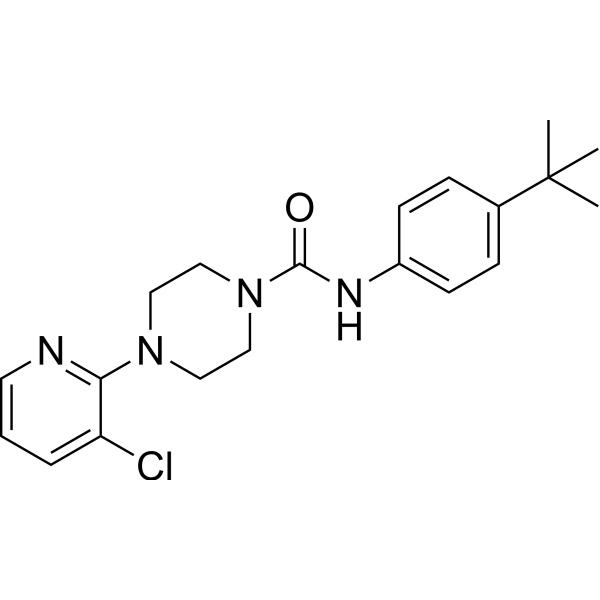| Description: |
BCTC is a potent and specific inhibitor of transient receptor potential cation channel subfamily M member 8 (TRPM8) in prostate cancer (PCa) DU145 cells. |
| In Vivo: |
BCTC is a potent, selective, and orally bioavailable antagonist of rat VR1. BCTC not only blocks the activation of rat VR1 by capsaicin but also by low pH at the native rat VR1 in a skin-nerve preparation. Thus, BCTC has provided us with an opportunity to test our hypothesis that the inhibition of low pH induced activation of VR1 confers in vivo efficacy in models of chronic pain. This report describes the effects of BCTC in models of inflammatory, neuropathic, and capsaicin-induced pain in the rat. The efficacy and side effect profile of BCTC in these models were compared with those of nonsteroidal anti-inflammatory drugs and antiepileptic drugs currently used for the clinical therapy of inflammatory and neuropathic pain, respectively.[2] |
| In Vitro: |
BCTC is a potent and specific antagonist of TRPM8, exerts an anti-tumor effect on the androgen-independent PCa DU145 cells, and the mechanism of how the inhibition functions. BCTC exerts an anti-proliferative effect on DU145 cells and induces tumor suppression through G0/G1 cell cycle arrest, and inhibition of migration and invasion. BCTC demonstrates excellent anti-tumor activity in PCa DU145 cells, and therefore has the potential to become a targeted therapeutic strategy against PCa. |
| References: |
[1]. Liu T, et al. Anti-tumor activity of the TRPM8 inhibitor BCTC in prostate cancer DU145 cells. Oncol Lett. 2016 Jan;11(1):182-188.
[2]. Pomonis JD, et al. N-(4-Tertiarybutylphenyl)-4-(3-cholorphyridin-2-yl)tetrahydropyrazine -1(2H)-carbox-amide (BCTC), a novel, orally effective vanilloid receptor 1 antagonist with analgesic properties: II. in vivo characterization in rat models of inflamm
[3]. Valenzano KJ, et al. N-(4-tertiarybutylphenyl)-4-(3-chloropyridin-2-yl)tetrahydropyrazine -1(2H)-carbox-amide (BCTC), a novel, orally effective vanilloid receptor 1 antagonist with analgesic properties: I. in vitro characterization and pharmacokinetic pro |






















